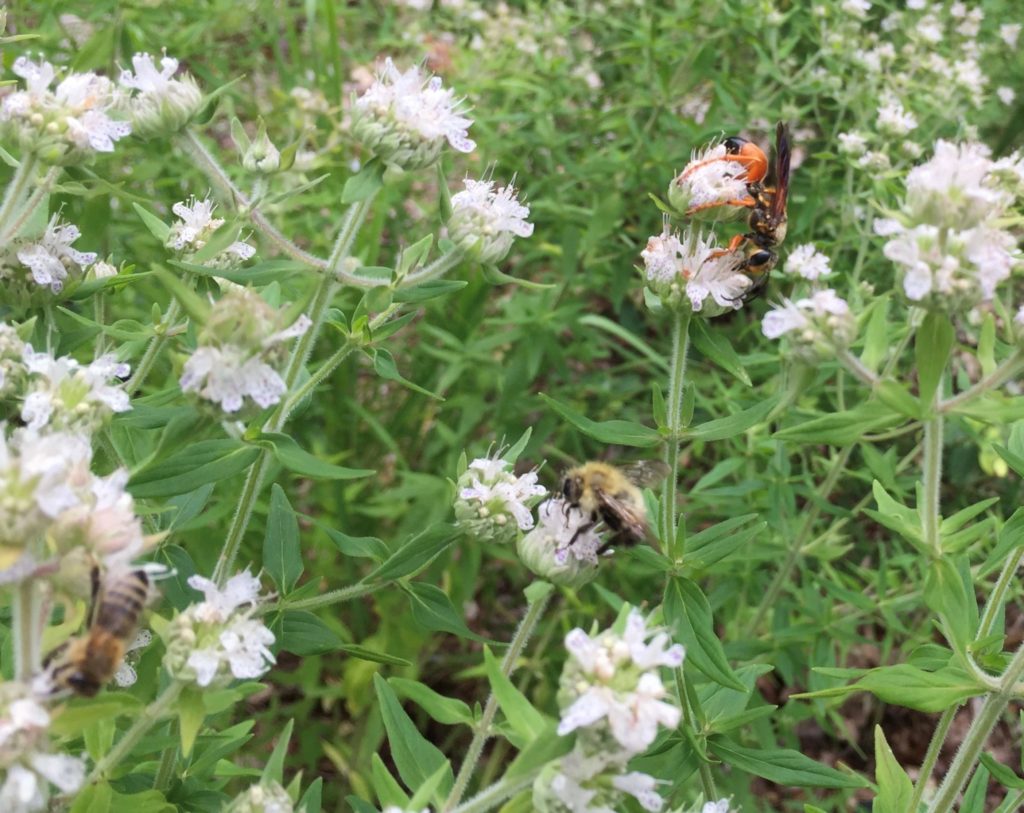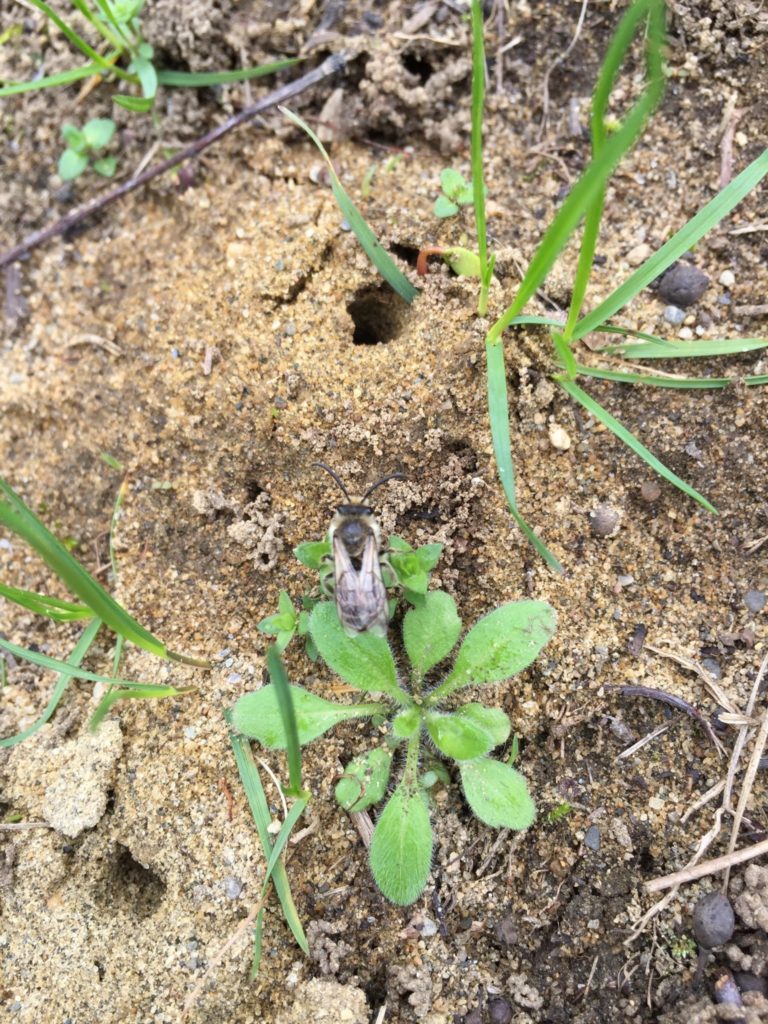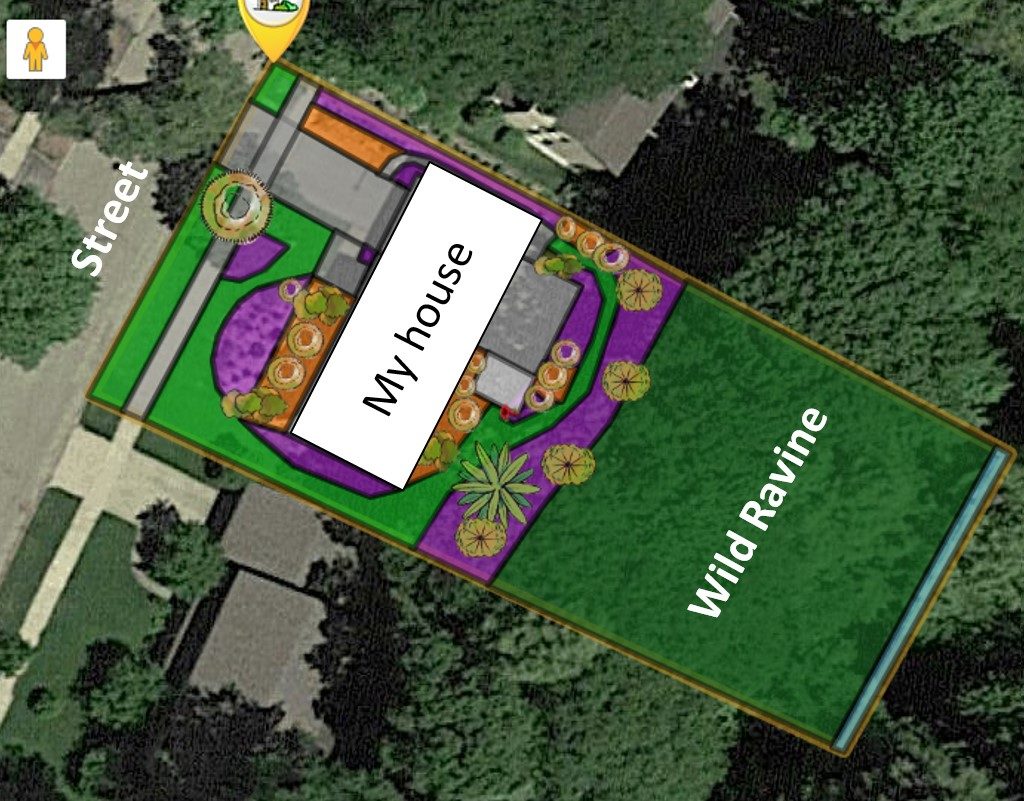Rewilding Our Home Lawns
The headlines read: “Birds are Vanishing” (by nearly 30% in the past 30 years) and “The Insect Apocalypse is Here”. In the not too distant future there’ll be headlines about loss of our native plants because 80-90% of all flowering plants require insect pollinators to reproduce. We wring our hands thinking we need to wait for government policies or agricultural methods to change, i.e. “someone else”, but wait! Nearly all of us have lawns around our homes. We can help solve this problem!

What exactly is the problem? Birds are at the top of this plant and insect food chain and they need different types of foods (from seeds to berries to insects) in different seasons. To reproduce, they need LOTS of soft caterpillars, high in protein and fat, to make eggs and raise their young to adulthood. If they can’t find enough caterpillars near their nests to raise their young or if they can’t refuel on insects and caterpillars while migrating, their populations decline. Simply put, for our birds to survive and thrive, they need more insects to eat.
What do the insects need? They need plants: nectar for energy, pollen (protein and fat) for their reproduction, and host plants (or insects in some cases) for their “young” to feed on. They also need different types of shelter at different times of year: a bare sand bank, rodent tunnels, hollow plant stalks, rotting logs, and fallen leaves all might be a happy insect home. Unfortunately, that’s what traditional gardening has taught many of us to “clean up,” remove, or mulch over!


“But I have plenty of hosta and daylilies in my garden and always mulch them in place. Won’t this provide more than enough food and shelter?” The problem is there are not enough native plants in our landscapes. Our local insects and pollinators have a specialized network of relationships with native plants created over 100 million years in a dance of defense and offense: larvae needing to eat plant leaves and plants needing pollinators to successfully make seeds. Studies have recorded that where there are hedgerows of non-native plants (compared with native plant hedgerows), there were 68% fewer species of caterpillars, 91% fewer numbers of caterpillars and 96% less biomass/energy of food for birds and thus 96% less bird biomass (Douglas Tallamy). In other words, fewer native plants means less food for insects, which means fewer insects for birds to eat, which means fewer and less healthy birds. To fix this, we need to return a diversity of native plants to our landscape, now!
Below is a map of my lot. The street is on the left, and the rear half on the right is a wild ravine. The purple and orange areas are former lawn areas which I planted with native plants in 2016. My remaining lawn is lime green. Imagine your property from above. Where do you still need lawn for walking or a play area? Then imagine where you could slowly add beds of native plants and shrubs. Do you have an oak tree which hosts the most caterpillar species (over 500!) of our native trees? Add some shrubs and woodland perennials underneath that can hold the leaf litter over winter providing shelter for those insect pupae. Protect all the insect homes (and your back!) by letting go of all that fall “clean up” (And please… no more pesticides, herbicides, or chemical fertilizers).

Let’s create a new normal in our neighborhoods: less lawn and more native plants humming with insects and caterpillars to feed more baby birds. Let’s learn to appreciate the beauty of native plants and the little bit of “messiness” required for year-round insect habitat.

Plant more native plants! You’ll be surprised how quickly so many different insects show up. They’ve been waiting for more native plants! Take insect photos and post them to iNaturalist.org where fellow citizen scientists can ID them for you. Who knows, maybe one of the rare bumble bees will show up in your yard!
Download the PDF below for a listing of WHICH native plants to start planting in Burlington yards and tell us about your progress. Let’s track Burlington’s neighborhoods “going wild”!
Native Plants for Our Insects and Birds.pdf
About the Authors
Kate Kruesi is a multi-decade native plant gardener who enjoys observing and simulating the beauty of our wild natural communities.
Max Madalinski is a Project Coordinator for the City of Burlington’s Department of Parks, Recreation, and Waterfront. Max helps manage Park construction projects from conception to completion. Outside of work, he spends his time enjoying the outdoors by tending his local community garden, enjoying the beautiful Burlington sunsets from one of the city’s many beaches, or riding his bike for the fun of it, most likely with his five-year-old son riding alongside.
